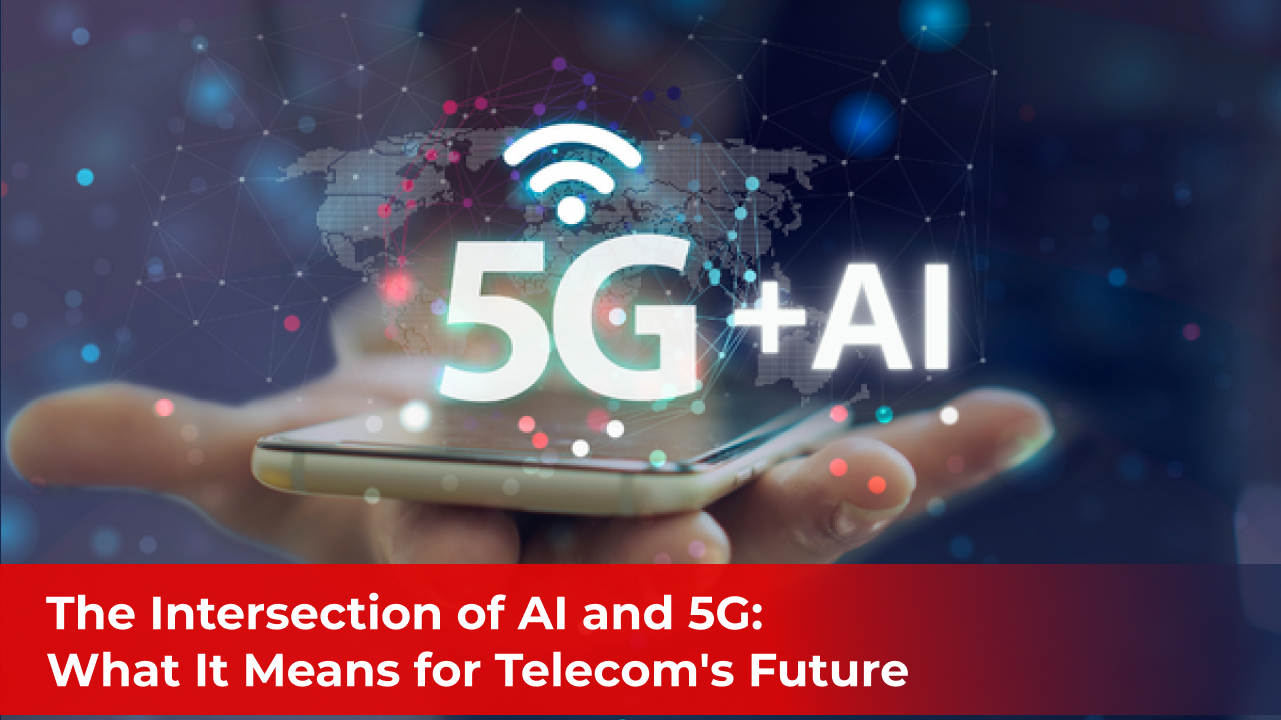5G network opens new opportunities, enabling the advancement of telecommunication through its high-speed, ultra-low latency, and enhanced mobile broadband capabilities. However, even after being a revolutionary upgrade in mobile broadband, it has some limitations and requirements that can not be fulfilled now. For that, artificial intelligence has become a pioneering approach. The involvement of artificial intelligence can fulfil the criteria to boost the capabilities of 5G networks, and together, they can revolutionise wireless networking by offering unparalleled connectivity and intelligence. Explore the article to discover how 5G and AI can transform the telecommunication landscape, enhancing how we connect, communicate, and consume data.

The involvement of AI can develop the 5G network.
Artificial Intelligence (AI) can be programmed in loop automation, which constantly monitors the performance and quality of the service. In the case of 5G networking, suppose that the network's latency exceeds the acceptable threshold. Then this loop automation system will automatically identify the issue and apply the necessary measures, such as reallocating the RAN resources or the Core Network.
This AI loop system will efficiently analyse the network data in real time, finding problems and issues before they reach the users and eliminating them using effective measures. In the telecommunication industry, this provides operational efficiency and the utmost quality of service. In conclusion, artificial intelligence will be an excellent addition to the industry, opening more opportunities for the industry and users.
Applications of Artificial Intelligence in Telecommunication
In the above section, we discussed how AI can help the telecommunication industry develop the necessary infrastructure to use networks at their full potential. Now, let's discuss the areas in which AI can foster development. Here are some limitations AI can address in Telecommunication:
- Network Optimisation and Management: Network performance can be optimised by analysing the network traffic pattern and optimising network allocation, for which AI can be a great help. AI can create a model of the urban environment and find out how the urban infrastructure is affecting signal propagation.
- Customer Service and support: Artificial intelligence can develop the telecommunication enterprise by upgrading customer service and offering a more personalised experience. With chatbots and assistants, telecommunication companies can provide 24/7 customer support and more personalised recommendations.
- Secure Network: It can identify and correct potential errors before they reach users. This way, the telecommunication industries can apply the necessary measures to fix an issue before it occurs. AI can be programmed to create an automation system that constantly monitors problems and updates the software to keep it secure.
- Detection of fraud and prevention: Artificial Intelligence can monitor network traffic constantly, and this 24/7 detection will help it examine every single data packet, user interaction, and anonymous patterns and behaviours. Thus, this capability of AI can overlook and detect fraudulent activities and stop them before they scam someone.
- High-Quality Service Optimisation: Besides monitoring network traffic, AI can monitor performance metrics, including packet losses, latency, and outputs. This capability allows AI to optimise the network parameters, ensuring a reliable and high-quality network service.
The future with 5G and artificial intelligence (AI)
We discussed how AI and 5G together can change the telecommunication industry's overall operations, but how can it foster the working of other sectors? Let's discuss the future with 5G and AI, and how it can change the operations:
- Driving Innovation and Enhancing operational efficiency: Companies can leverage 5G and AI-congregated technology to drive innovation and improve efficiency, as it can quickly generate enormous data. Moreover, the involvement of augmented, virtual, and mixed reality can set a more heightened benchmark for telecommunication infrastructures.
- Improved energy efficiency and reduced carbon emissions: 5G can help organisations and companies operate more efficiently and reduce carbon emissions. It is said to be 90% more energy efficient than 4G, making it ideal for companies to match their sustainability goals.
- Enabling smarter, streamlined operation: Because AI can analyse predictive data, organisations leveraging 5G and AI can make smarter, data-driven decisions. The complex AI algorithms will help industries operate more smoothly. However, companies must know about the environmental impact of AI and operate towards sustainable growth.
Conclusion
When we look into the future, we know that AI will play a crucial role in the development of various sectors and industries. As it merges its capabilities with 5G networking, its abilities are boosted to the next level, opening more doors of opportunity for users. Together, 5G and AI can help take telecommunication to the next level, building intelligent, self-optimising networks that can adapt according to conditions and provide unprecedented networking efficiency.
